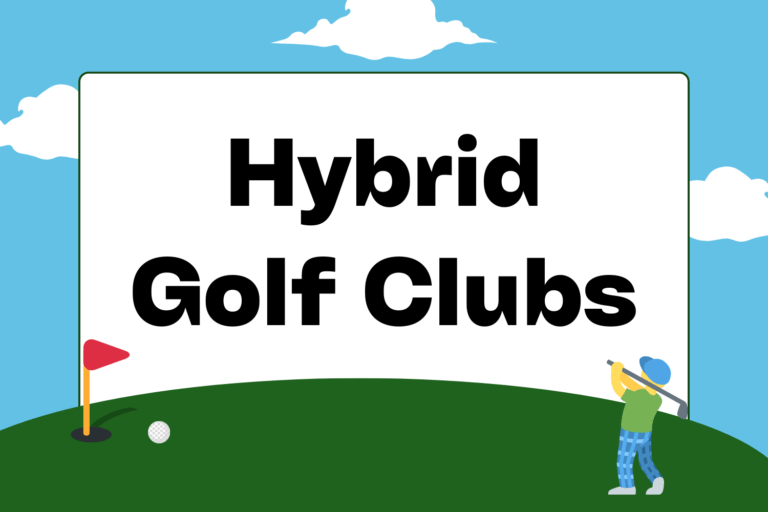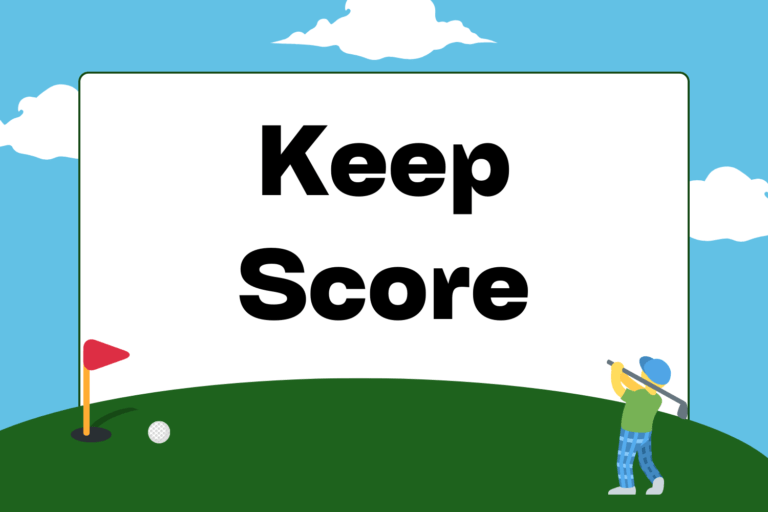So maybe you feel good with your driver—you hit it long and straight—and you like your chances on the putting green. Problem is, the shots in between aren’t getting you in a position to putt for birdies, or even pars. That’s when you know you’ve got some work to do on your iron play.
Irons, especially long irons, can be intimidating. Unlike from the tee box, there’s nothing between your golf ball and the ground, and you’ve only got this flat-faced piece of metal to get the ball up into the air. But you can improve your iron play with the right swing mechanics, a healthy dose of practice, and a boosted level of confidence. This guide can help you with the first of those three elements, and the other two will come along.
Hitting Down on the Ball
By far, the most widespread issue golfers struggling with their irons have in common is they hit the ball on the upswing. That’s why these golfers usually have a fair time with their drivers and woods – clubs that are designed to be hit on the upswing. But with irons, you’ve got to do the opposite if you want any success. You have to hit down on the ball with an iron.
Here are six setup and swing steps that will help enforce that downward motion:
Step 1: Ball Position
With your short irons, play the ball in the center of your stance. For your mid-irons, play the ball about an inch further up in your stance than the middle. And for your long irons, play the ball a little further forward than that, just off your front heel.
Hot Tip: Longer Club, Wider Stance
Widen your stance a little more for each longer club. For example, with your shortest iron (probably your 9-iron), keep your feet about shoulder-width apart, and as you move into longer clubs, start getting a bit more distance between your feet. The key here is to keep the ball in the same position relative to your stance; that is, just because your feet are set farther apart when you’re hitting a 5-iron than they are for an 8-iron, it doesn’t mean that the ball’s position should change at all. Why the wider stance? Longer clubs mean longer swings, and wider base can improve rotation and balance.
Step 2: Alignment
As with any club, you won’t be able to hit your irons correctly if you aren’t properly aligned to your target. A good way to line up your clubface to your target is to stand behind the ball, pick out a spot of grass or a leaf six inches in front of your golf ball on the line of your target, and then set the clubface to that spot directly in front of the ball. Then, make sure your feet, hips and shoulders are set parallel to that line.
Step 3: Setup
Once you’re aligned, there are a few things you can do in your setup that will help you feel more solid over the ball.
- Flex your knees a comfortable amount and press your hands forward a bit.
- Your spine’s angle should be at about 60 degrees—not too far hunched over the ball, and not too upright.
- Make sure you’re standing far enough away from the ball so that you aren’t crowding it, but close enough to it so that you aren’t stretching to reach for it.
- You can turn the toes of your feet outward a bit to promote balance and an easier rotation, especially your front foot.
Once you feel relaxed over the ball, you’ll know you’re ready to start your swing.
Step 4: The Backswing
Unlike with your driver, you want a steeper angle on the takeaway with your irons. That means your wrists should hinge much sooner on your backswing than they do with your woods and driver. Keep your front (weak) arm straight on the takeaway, and get your front shoulder as far under your chin as you can to ensure a full rotation on the backswing. At the top, your wrists should be hinged and your weight should be loaded on your back leg.
Step 5: The Downswing
As you start your downswing, the main thought to keep in mind is to transfer your weight onto your front side. If you keep your weight on your back leg during your downswing in an effort to pop the ball up, the results will only disappoint you. Shift your weight forward, and keep your wrists hinged as they drop toward the ball until just before contact. Snapping your wrists at the bottom of your downswing will add power and promote solid impact with the ball.
Step 6: Follow-Through
After impact, don’t quit. Let your hands chase the line of your target before letting them lead your body’s turn. In the end, you should have 100 percent of your weight on your front side, proven by your back foot’s position on its toe. If you can pose like a trophy at the end of your swing, you know you have the right amount of balance.
Practice
Great iron play comes with a lot of practice. For some of your irons, especially your short irons, you might begin feeling comfortable with them sooner rather than later, which is great. Long irons might take some more practice and work for you to feel confident with them, but that’s not because you need a different strategy with long irons as opposed to short irons. The setups are the same (aside from a slightly more forward ball position for longer irons), and the swing thoughts are the same.
Long irons, with their smaller clubfaces and longer shafts, are simply less forgiving. So you’ve just got to be more precise with long irons than you do with short irons, which will take practice. Iron play can be frustrating while you’re trying to improve, but all of that hard work will be worth it once you hit a crisp iron shot onto a green, giving yourself a good chance for a birdie.





